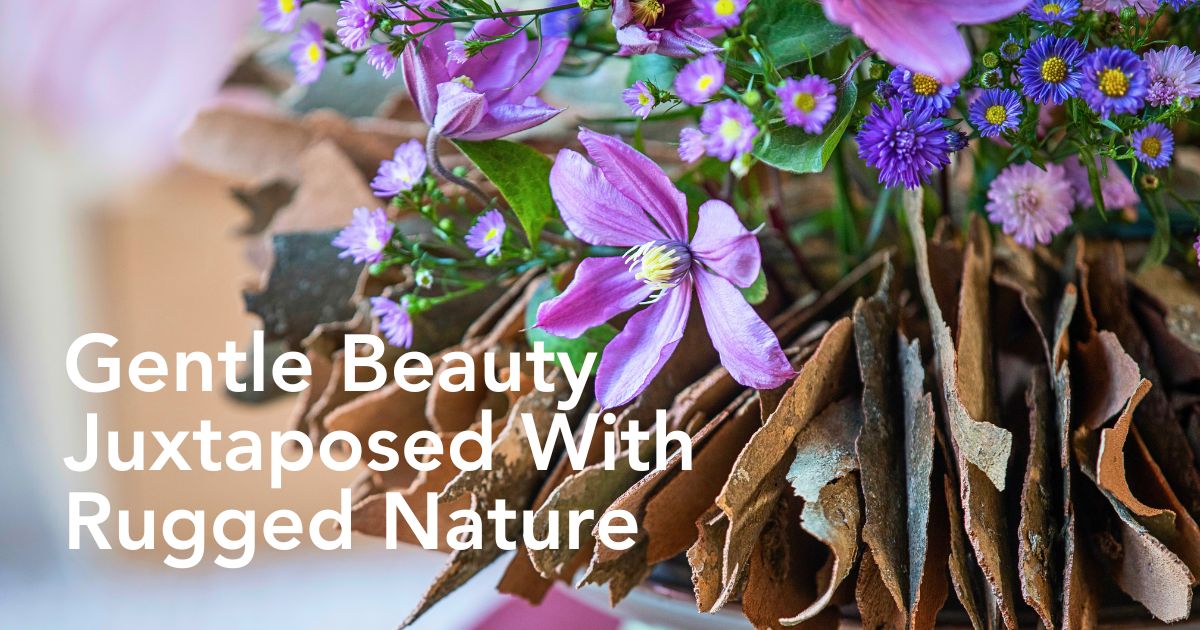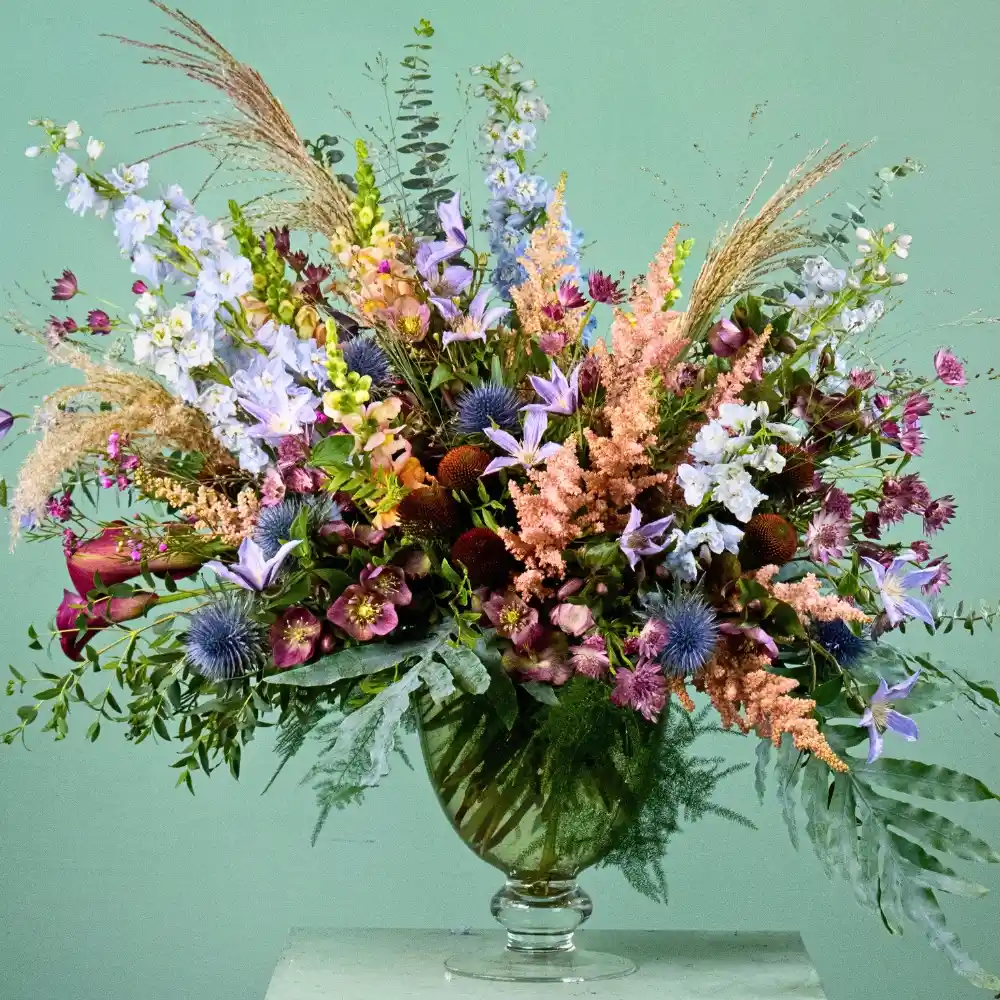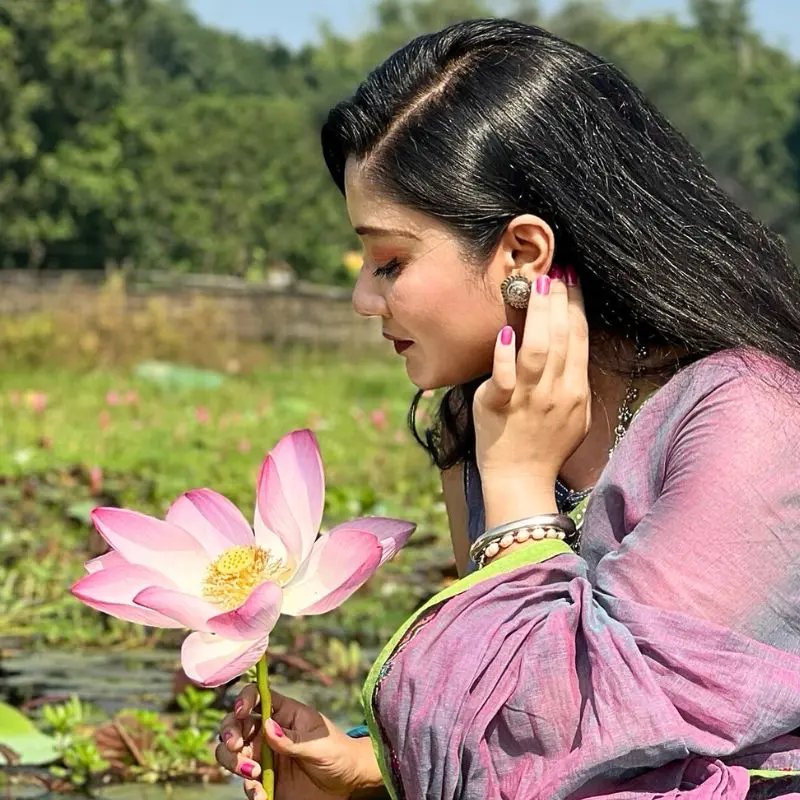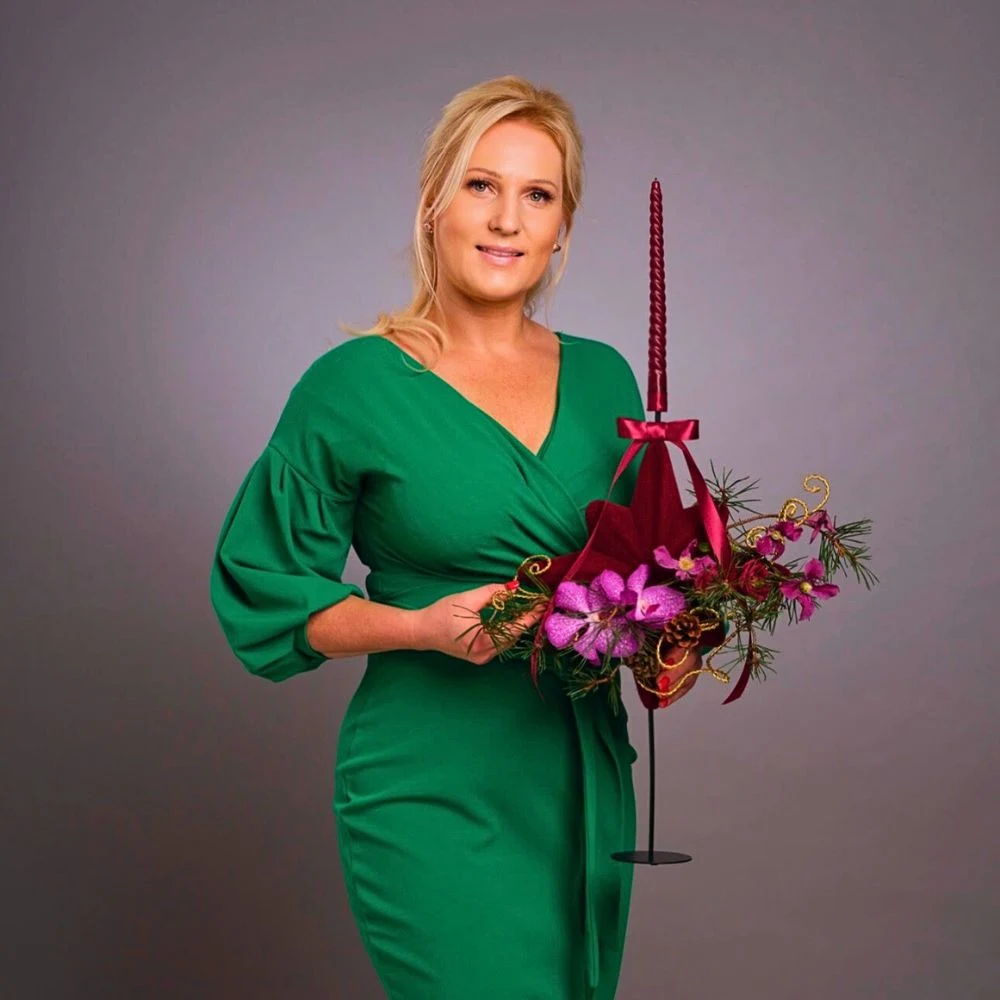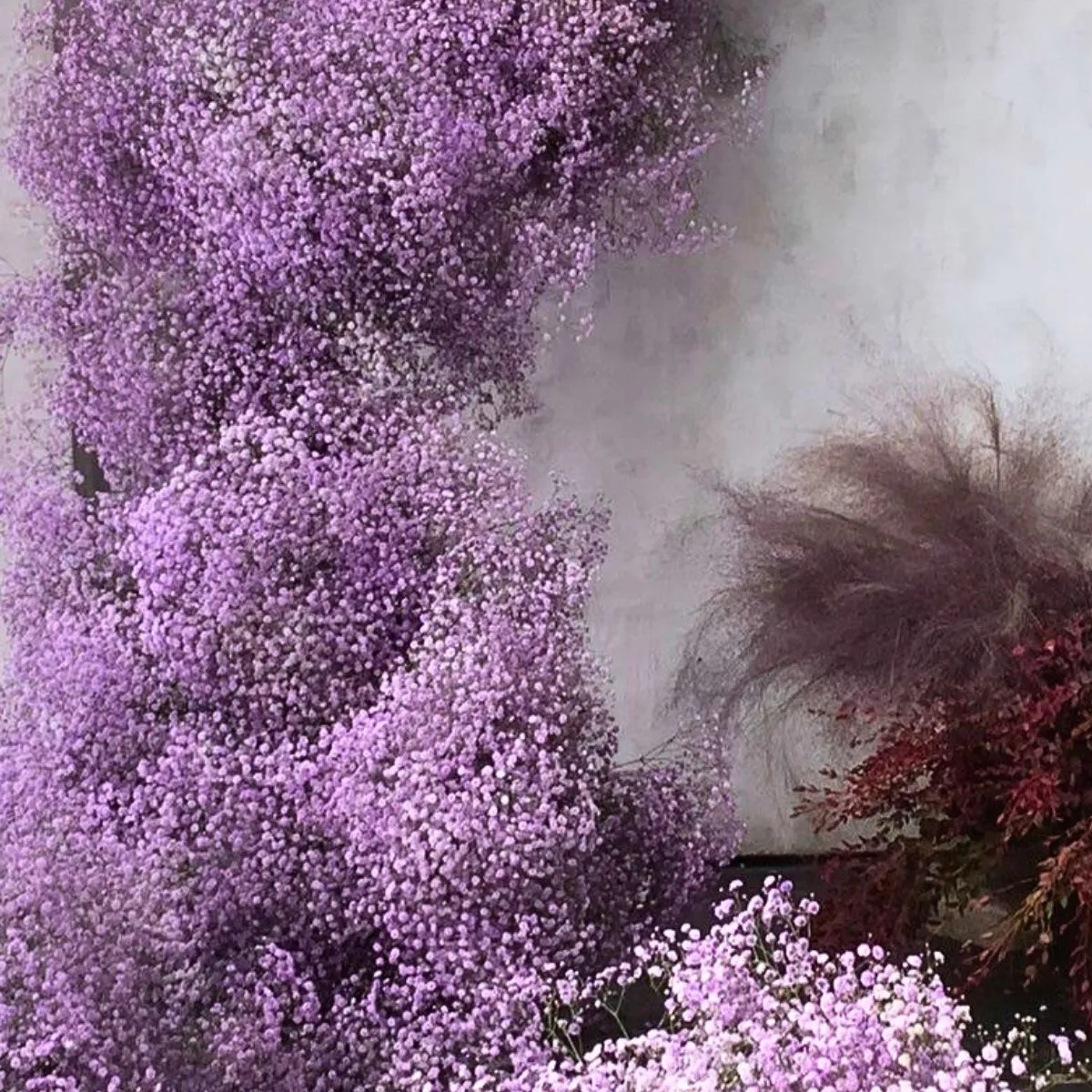There's something quite charming that happens when the delicateness of flowers meets rugged textures in designs. Maybe a rustic charm? Perhaps that’s it. Nonetheless, this design approach celebrates contrasts. In this particular case, the gentle beauty of flowers perfectly complements the raw, weathered character of bark, bringing out an unexpected charm—raw, quaint, natural, and simple beauty—in arrangements.
This avant-garde floral design approach has been beautifully showcased in a series of innovative arrangements in which grower Marginpar’s Asters take the starring role. Their clusters in shades of purple and pink add a lively touch against the earthy textures. And with Clematis Amazing® Tokyo joining the mix, there's even more reason to love these designs. Just so you know, Clematis Amazing® Tokyo is up for the Royal FloraHolland Glazen Tulp award. Voting for this prize is open now, so if you are a fan, cast your vote before the winners are announced.
Textural Storytelling Through Bark and Floral Elements
Bark, the co-star in these designs, brings its own narrative to the designs. From plane tree bark to birch and pine varieties, each adds a unique character to the arrangements. The rough, weathered surfaces tell tales of seasons weathered and time passed, which in turn creates an intimate connection to nature's raw beauty.
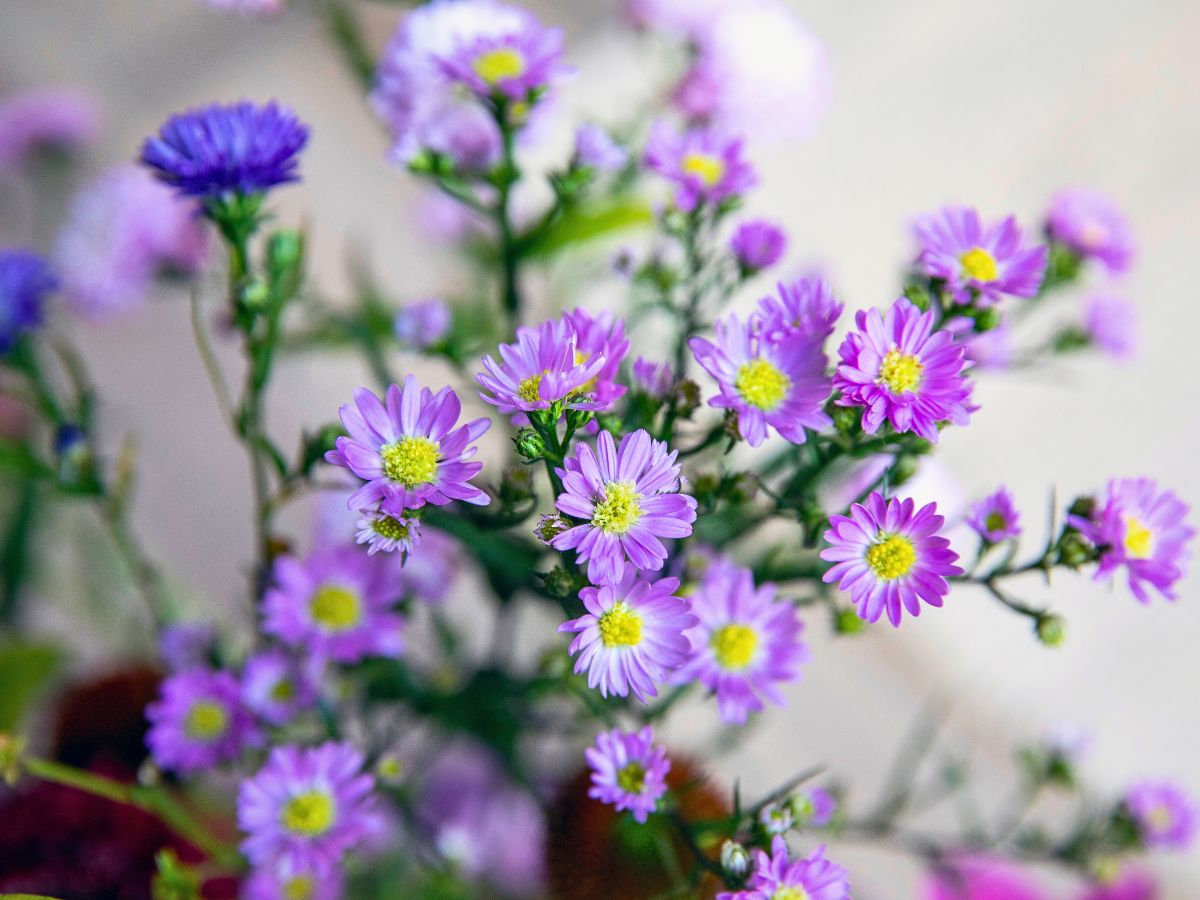
Plane tree bark offers smooth, mottled surfaces, while birch provides distinctive white and brown striations, and pine bark's furrowed character adds rugged texture. Yet, the trick in the designs is in the elements’ contiguity. The tender, almost fragile appearance of the Asters, including Aster Dark Milka, Aster Double Date Pink, Aster Teeny Tiny Pink, and Teeny Tiny Blue, is defined, framed by the rugged character of the bark.
In the designs, the Asters' precise petal arrangement gains its strength within the framework of the bark, bringing out quite the outcome that speaks of a harmony of cultivated fineness and wilderness, refinement and rusticity, and softness and structure. These flowers, available year-round in the current colors, fit right into these creative pieces, and the result is more than the usual bouquet one would expect—featuring both contemporary and timelessly rustic elements.

So, go ahead. Check out these arrangements.
A Rustic Flower Ring
This design starts quite simply and develops into quite an unusual, striking piece. It features a ring of plane tree bark around a water-filled bowl. Pieces of bark are fixed into a foam ring using hot glue, leaving the center open. Chicken wire in the bowl holds the stems steady, letting Asters Dark Milka in deep purple tones, Double Date Pink in softer hues, and Teeny Tiny Blue and Pink fill the space. Clematis Amazing® Tokyo adds elegant petals here, while purple Scabiosa Virtuoso® Saura adds its rounded forms.
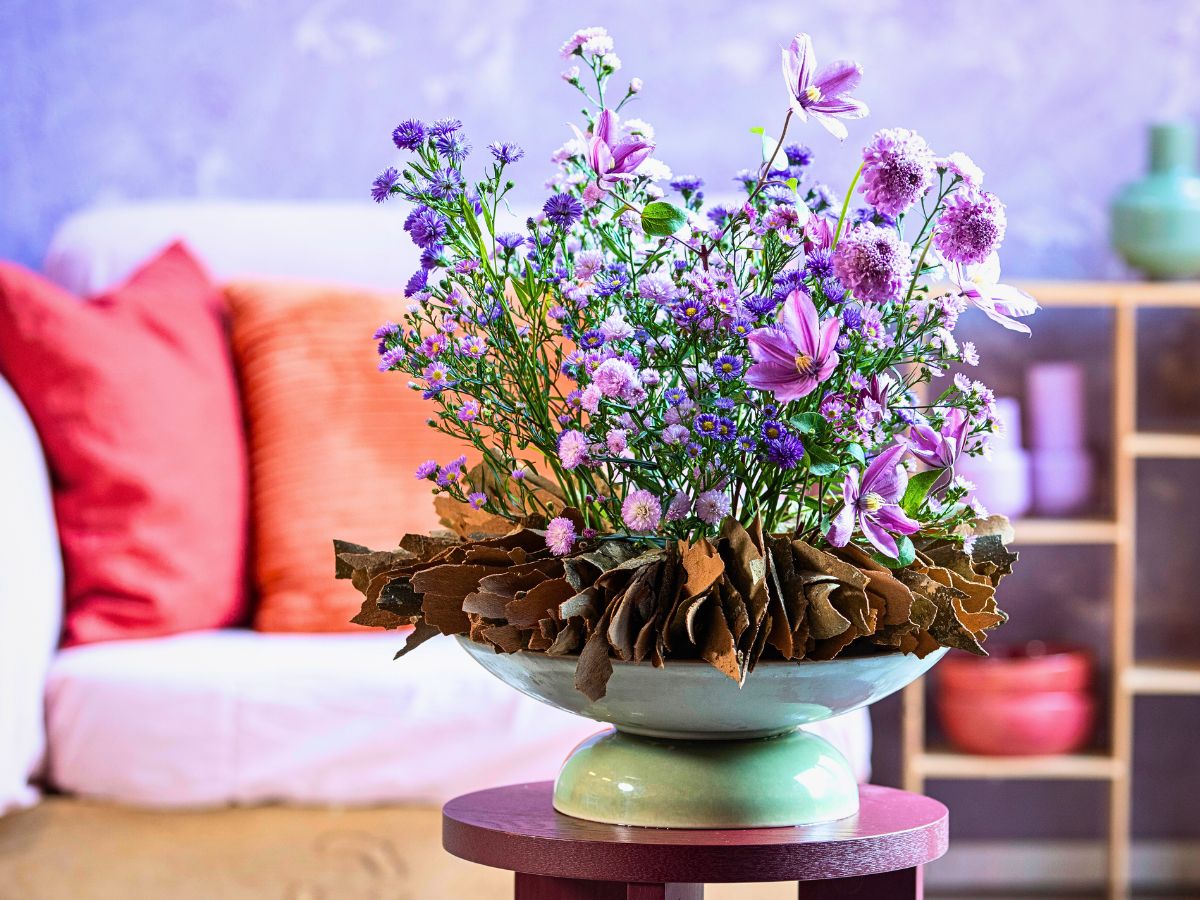
This setup plays with textures—the smooth flowers against rough bark create a natural balance. It is easy to assemble and suits any season. Anyone looking to mix things up without much fuss can try it out. The bark's raw edge gives the piece a handmade feel, perfect for tabletops or events where one would want a subtle nod to the outdoors.
The Spiraling Flowering Snail
This design ‘moves’ and curls quite like a snail shell. It is made from birch bark stapled together and secured with hot glue if needed, and clamped into a bowl with water and chicken wire. The flowers are then tucked in between the layers. The Asters cluster densely, their small heads peeking out playfully. Clematis Amazing® Kyiv weaves in its vine-like grace, paired with Echinacea and dark Scabiosa Dark Cherry Scoop®.
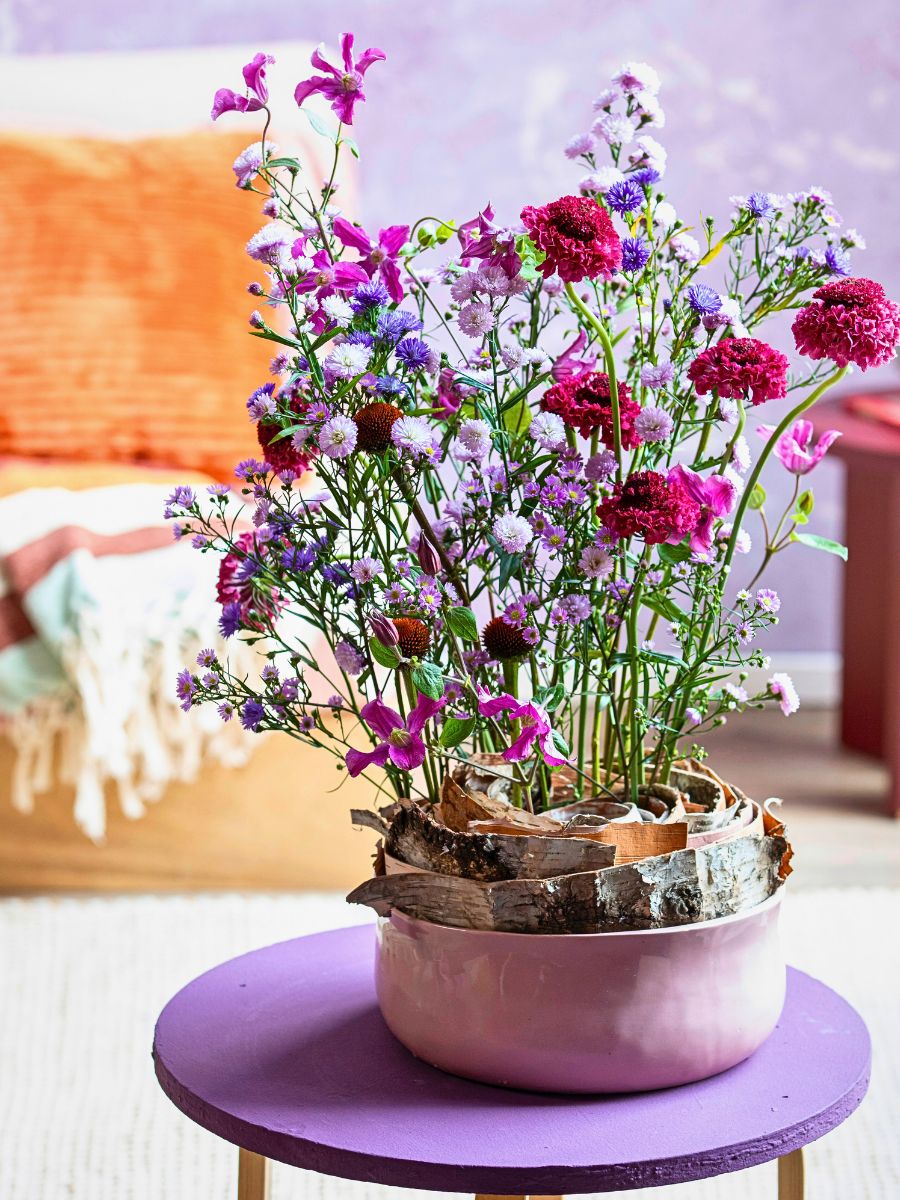
For another twist, use the same birch in a vase with binding wire and tacker needles. Grasses like Chasmanthium Mantis—or bamboo—add height, while Sanguisorba Red Dream® introduces its slender spikes, and Clematis Amazing® Havana creates a cheerful accent. The spiral draws the eye inward, highlighting how Asters' compact shapes fill gaps naturally. It is a design that beckons a closer look, ideal for modern rustic interiors.

Protected Blossoms
This design features bark pieces screwed and wired to a stand, creating a protective frame. Holes are drilled beforehand for glass tubes that hold water, and then the flower stems are inserted. Asters Dark Milka, Double Date Pink, and Teeny Tiny Blue stand out against the tree bark, mixed with Astilbe Vision in Pink for feathery accents and Clematis Amazing® Kansas and Clematis Amazing® Tokyo for broader petals. Scabiosa Virtuoso® Saura also dots the arrangement with its purple spheres.
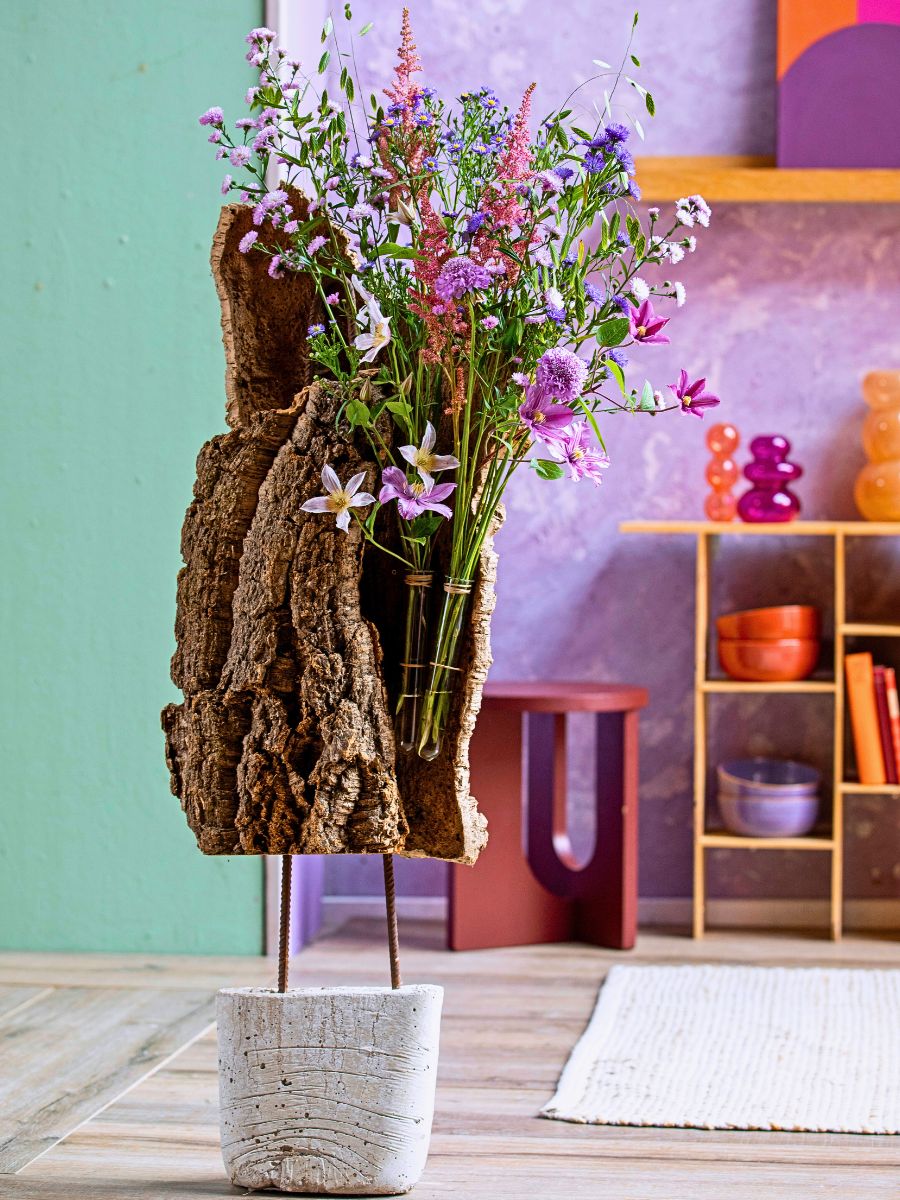
Overwritten Flower Greeting
In an almost similar vein, the ‘Overwritten Greeting’ uses plane tree bark pierced and threaded on wires, attached to colored timber. Tubings secure and water the flowers, featuring the same Asters used previously, alongside Chasmanthium and Clematis Amazing® Havana and Clematis Amazing® Kyiv. Both these stands make the flowers in the design take on the character of sculptural elements, where bark acts as a sturdy backdrop. And they are reusable, too. One can swap out stems as needed for ongoing displays.
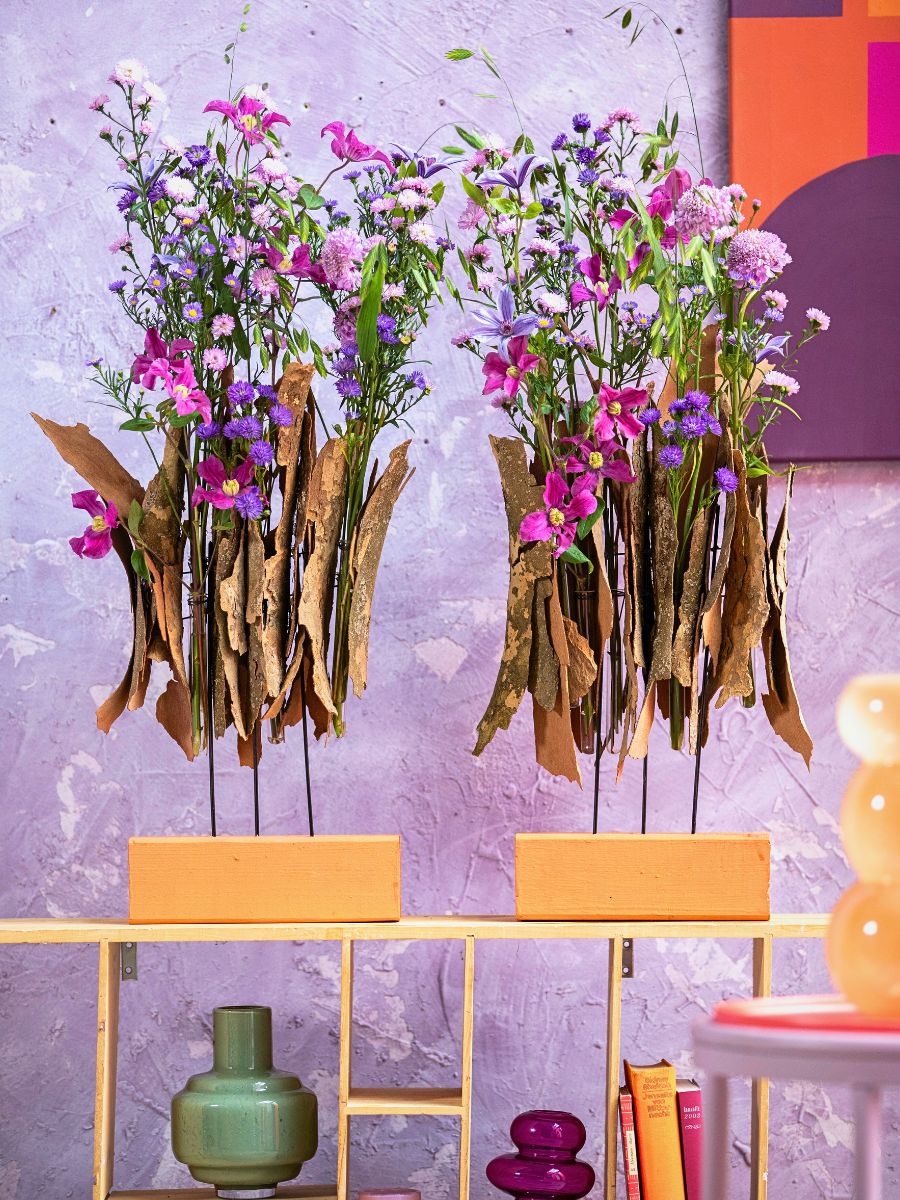
Floating Nature Suspended in Bark
This design takes it a bit higher with a floating piece. Two bark sections are screwed together, held by coiled wires in a colored wooden board. Glass tubes between them supply water to the stems. The Asters mingle with Clematis Amazing® Havana and Clematis Amazing® Tokyo, Scabiosa Dark Cherry Scoop® and Virtuoso® Saura, as well as Sanguisorba Red Dream®.

The suspended look gives a sense of lightness, with the flowers seeming to emerge from the wood. It is an audacious choice for installations, where the contrast between organic bark and precise tubes adds intrigue. It can be adapted for larger scales, like event decor, maintaining the Asters' central role for their reliable color and form.
The Handcrafted Refined Collar
The handcrafted collar in this design adds a professional look and feel. A collar of pine bark is placed over a pot, then the pot's outline is traced on the bark, and holes are drilled inside. Once done, the pot is filled with water, and the bark is placed atop it. Aster stems poke through the openings, alongside others like Chasmanthium Mantis, Clematis Amazing® Kyiv, and Scabiosa Virtuoso® Saura, to create a full, textured top.

This design is more practical. Create it once, then refresh with new flowers. The bark feature brings a crafted quality therein, enhancing the simple pots, making them statement pieces. The design is ideal for seasonal shifts, where the Asters ensure consistent appeal.
Behind the Flowers
While traditionally considered autumn flowers, Marginpar’s Asters break free from this seasonal expectation due to their year-round availability. The grower also produces these flowers sustainably, guided by their Hamuka Kaizen principles.
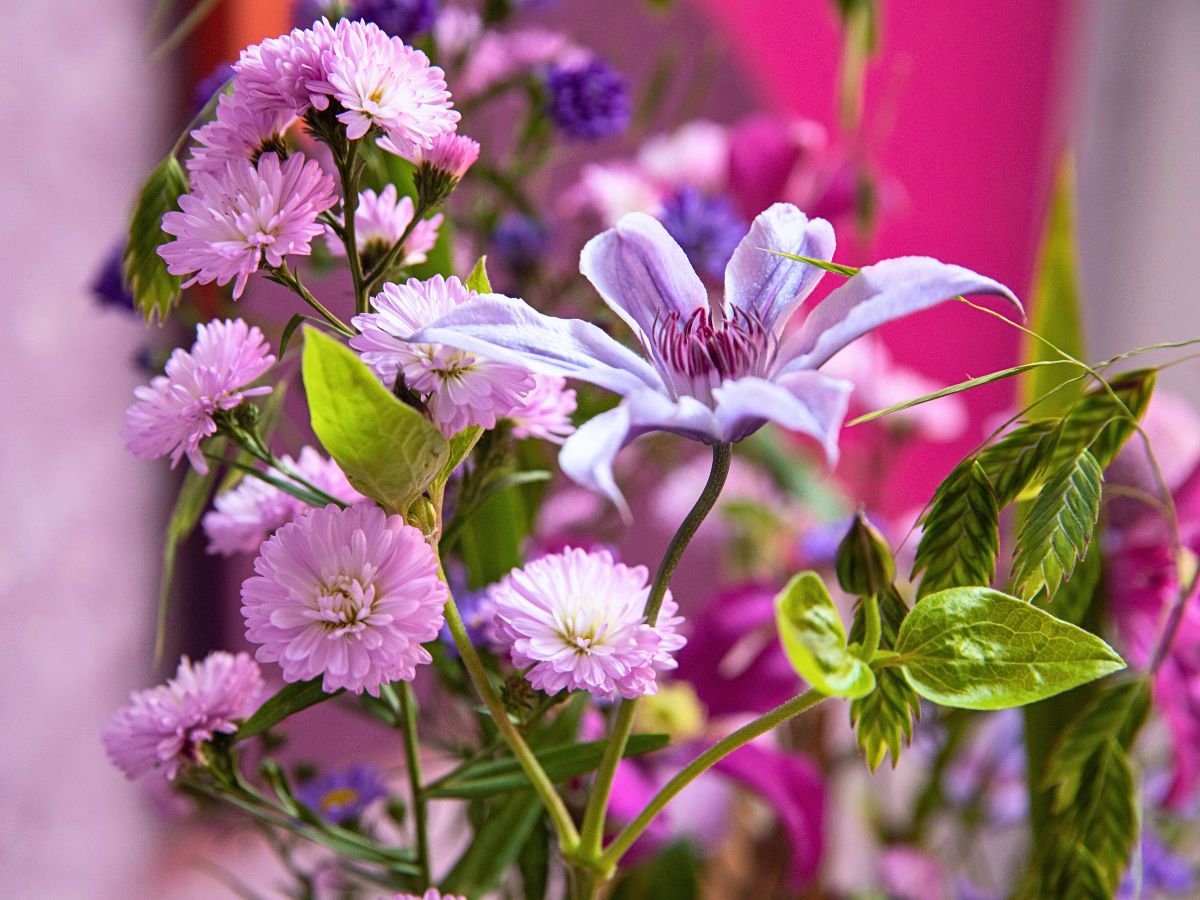

These varieties, therefore, provide flexibility to create such unique bark compositions throughout different seasons. Their contemporary color palette embraces other seasons' colors that beautifully define winter or spring arrangements. Plus, the bark pairings work perfectly, too. And with Clematis Amazing® Tokyo in the mix too—remember its spotlight for the Glazen Tulp award?—it is probably a good time to try these ideas.
Photos by BLOOM's, courtesy of Marginpar.

